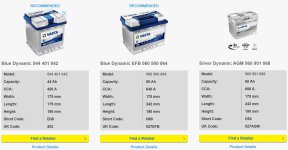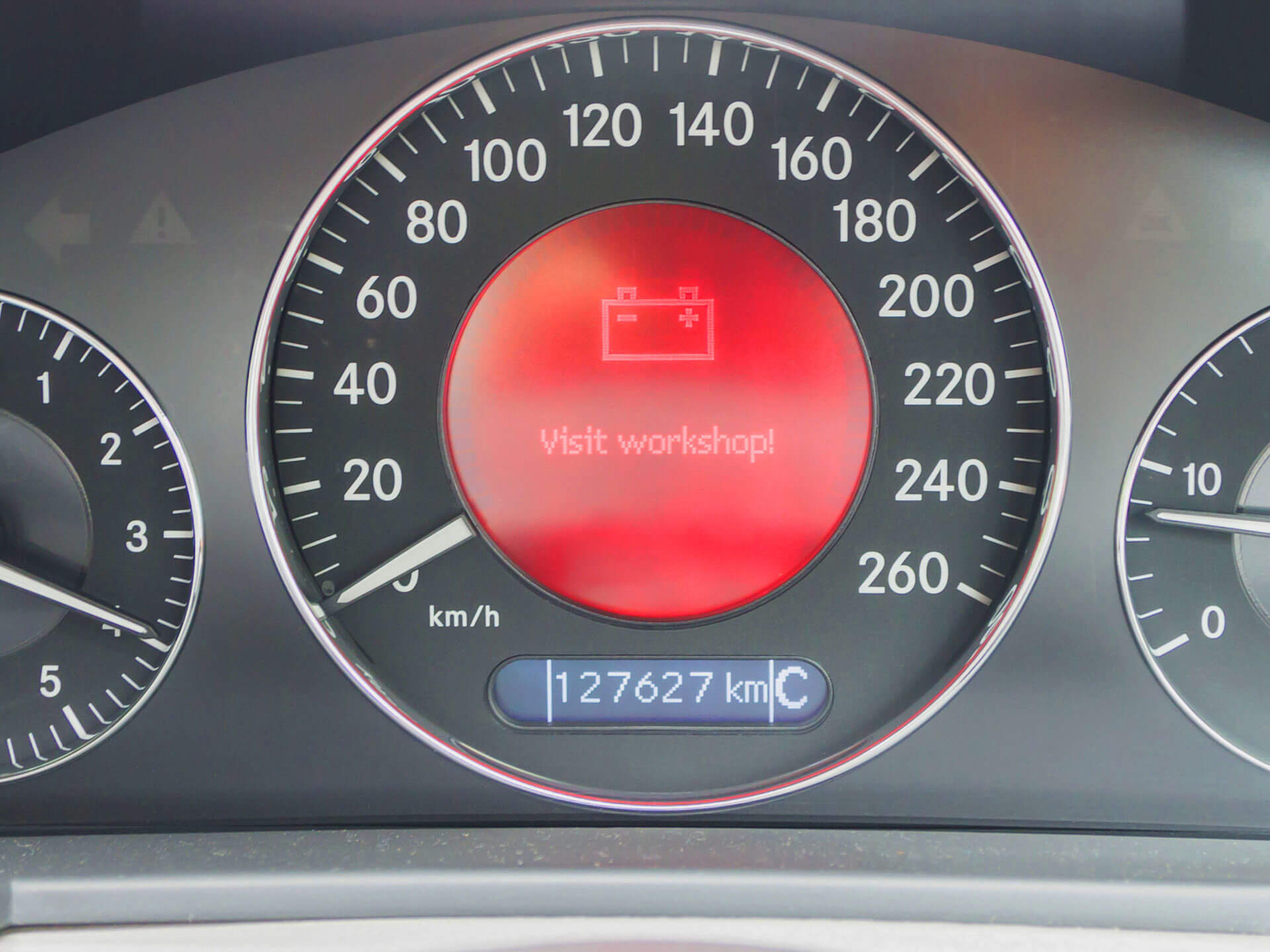The Yuasa Silver HSB012 is more than powerful enough and a very reasonable price at Tanya Batteries or Halfords if you have a trade card.
If you want to retain the stop-start, then costs will double. You can buy a lot of petrol with the price difference.
Hi Dave, hope you had a nice Christmas. I completely agree with you, having just bought one, that the Yuasa Silver HSB012 is a great battery for the Panda. Literally dropped straight into our 2012 169 1.2 Eco Dynamic, and I can strongly recommend one.
I'm just a little bit "worried" by the implication of your second sentence which implies, unless I misunderstand, that you can use a standard wet flooded cell battery in a stop start car? Of course, yes, physically it will be possible to do this and, yes, the stop start function will very quickly fail - if indeed it ever works at all. However, as I understand correctly, that's going to be the least of your problems. Many stop/start systems do much more than simply monitor the state of charge of the battery and then make a decission as to whether to permit it's activation - only allowing it's use if the battery is in a good state of charge. Trouble is a standard "wet" battery can't respond to the constant, high amperage, discharge/charge cycling which stop/start imposes and not just that but many stop start systems, because their alternators are controlled by an ECU, not the old regulators of times gone by, employ "smart charging" where charging - and so energy required by the alternator - is cut to a minimum when accelerating and boosted to very high charge rates when decelerating thus using the free energy which would normally be wasted by braking. These sort of charge rates and constant cycling between heavy charge and discharge current flows is said to be capable of destroying an incorrectly spec'd new battery within months of fitting. There's a lot more going on and I'm sure I don't know the half of it. As I understand it the old wet type batteries can really only be fitted to vehicles without stop start. I do find myself wondering if you could simply unplug the negative post battery sensor and then get away with using an older type battery on a modern vehicle, but I suspect it wouldn't like it and turn on a load of dashboard lights by way of complaint?
So the general rule of thumb is that if it's stop/start then you must fit an Enhanced Flooded Battery or Glass Mat and if it's got a glass mat as standard then you'd be foolish to go with an EFB. Not got stop/start? like our Panda, then you'll be fine with any of them including the old "wet" type but I think Glass matt might be a bit too extravagant to be justifiable. I see some of the manufacturers recommending EFB as an "upgrade" This on the Varta website might interest?
Installation of a wrong battery or normal starter battery in a car with start-stop technology increases the risk of premature battery failure.

batteryworld.varta-automotive.com
Oh. and remember, some stop/start systems need to "recognize" when a new battery has been fitted which may require a coding operation to be carried out by the dealer or someone with a suitable scanner. This is because as batteries age they accept charge differently to when new so the "smart" charging system slowly alters the charging rate as the battery ages and this needs to be reset when a new battery is fitted. The insidious thing here is that the aging battery needs a bigger "boot up the backside" to accept charge so the ECU gently increases charge rate as the battery ages. It, the ECU, doesn't know when you fit a new battery so, unless you reset the system, it then charges the new battery at much to high a current rate and this will cause damage to the new battery which will fail prematurely, many report within a year of fitting.






